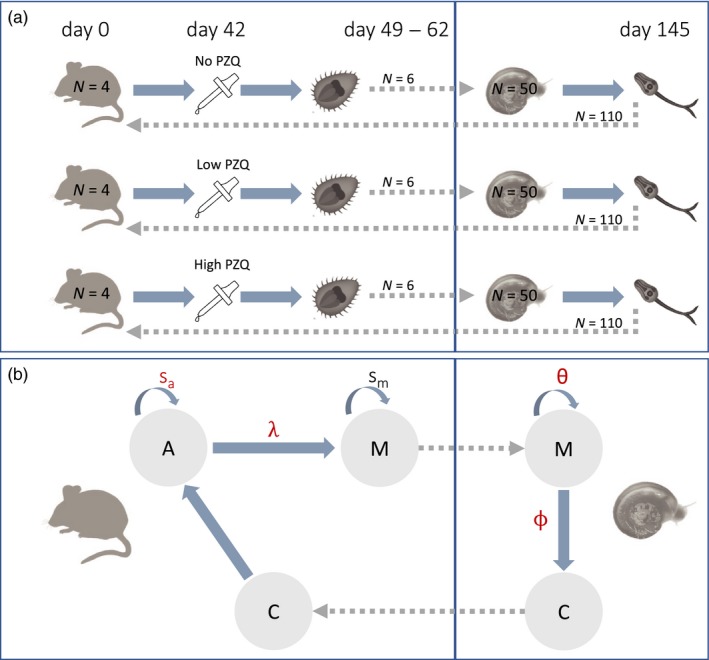Figure 1.

Simplified experimental design and life cycle of S. mansoni (as modelled). (a) Each parasite line (S, R and RS) was maintained in the laboratory through passage in four mice and 50 snails in each generation for each praziquantel treatment regime. In generation 1 (G1), mice were infected with 220 cercariae, and in subsequent generations (G2–G4), 110 cercariae were used to infect mice. In all generations, six miracidia were used to infect snails. (b) The life cycle of schistosomes was modelled using particular life stages. Cercariae (C) enter the definitive mouse host and establish themselves as adults (A). Those adults that survive (with survival rate s a) will sexually reproduce and lay eggs with a rate λ, which hatch into miracidia (M). The miracidia that survive (with a rate s m) will then leave the mouse host and enter the snail. The miracidia (M) establish inside the intermediate snail host with a rate θ and will start shedding sporocysts that become cercariae (C) at a rate ϕ. A new generation will begin as the new cercariae enter the definitive host. The parameters in red correspond to those which can be impacted by praziquantel. The dotted arrows indicate steps that occurred through experimental manipulation. The schistosome images are modified with permission from Genome Research Limited (https://www.yourgenome.org/facts/what-is-schistosomiasis)
